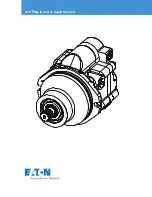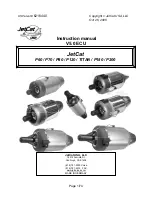
Roller-contact bearings
The machines are equipped with different types of rolling-contact bearings depending on the
version and the operating conditions described in the order. The different types are listed on
the lubricant plate of the machine. In converter operation an insulated bearing is usually
installed on the non-drive end. The following roller-contact bearing variants are available:
Table 3-3
Roller-contact bearing variants
Version
Roller-contact bearings
Horizontal type of construc‐
tion, coupling output
● Drive end: Deep-groove ball bearing as a floating bearing with axial
compression springs
● Non-drive end: Deep-groove ball bearing as a fixed bearing
Horizontal type of construc‐
tion, increased transverse
forces e.g. in the case of belt
coupling
● Drive end: Cylindrical-roller bearing as a floating bearing
● Non-drive end: Deep-groove ball bearing as a fixed bearing
Vertical type of construc‐
tion, shaft height 315 ... 450
● Drive end: Pairing of angular-contact ball bearing / deep-groove ball
bearing as a fixed bearing
● Non-drive end: Deep-groove ball bearing as a floating bearing with
axial compression springs
Rolling-contact bearing design for "Increased degree of protection" (option)
Improved sealing of the bearing units to prevent dust and water from getting in can be achieved
by positioning a grease chamber ahead of the actual bearing unit. Although the same grease
is used in both cases for reasons of convenience, a distinction is made here between
"lubricating grease" and "sealing grease" because of their different functions.
Layout
The spent lubricating grease collects in the space between the bearing housing and the outer
bearing cap. The latter also forms the sealing grease chamber with the labyrinth sealing ring
(optional). The second lubricating nipple containing the grease duct for pressing in the sealing
grease is also located in the outer bearing cap. The chamber is sealed off from the space
where the lubricating grease collects by a V-ring or a V-ring and felt ring combination which
prevents the sealing grease in the chamber from penetrating into the lubricating grease
collecting space. During operation, the sealing grease in the chamber slowly runs out via the
labyrinth and seals it, additionally removing dust from inside and around the outside of the
labyrinth ring.
Terminal box
The terminal box can be arranged either on the left or right of the machine. It is not possible
to change the position to the other side of the machine at a later date.
If you wish to upgrade to the next largest terminal box at a later date, please contact the
manufacturer.
Description
SIMOTICS TN Series N-compact 1LL8
24
Operating Instructions 11/2018
Summary of Contents for SIMOTICS TN 1LL8
Page 2: ...15 11 2018 10 24 V17 00 ...
Page 12: ...Table of contents SIMOTICS TN Series N compact 1LL8 12 Operating Instructions 11 2018 ...
Page 26: ...Description SIMOTICS TN Series N compact 1LL8 26 Operating Instructions 11 2018 ...
Page 98: ...Operation 8 9 faults SIMOTICS TN Series N compact 1LL8 98 Operating Instructions 11 2018 ...
Page 138: ...Service and Support SIMOTICS TN Series N compact 1LL8 138 Operating Instructions 11 2018 ...
Page 142: ...Quality documents SIMOTICS TN Series N compact 1LL8 142 Operating Instructions 11 2018 ...
Page 147: ......
















































